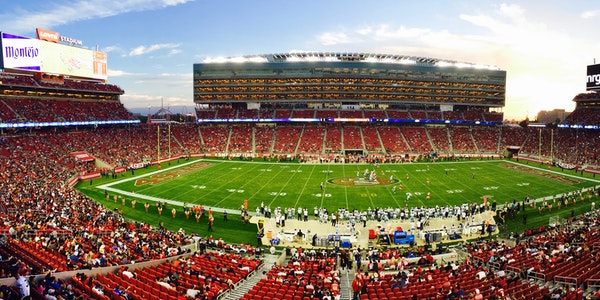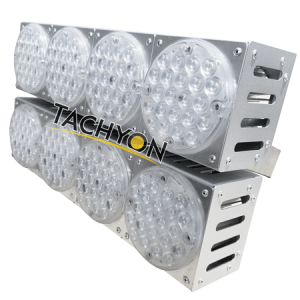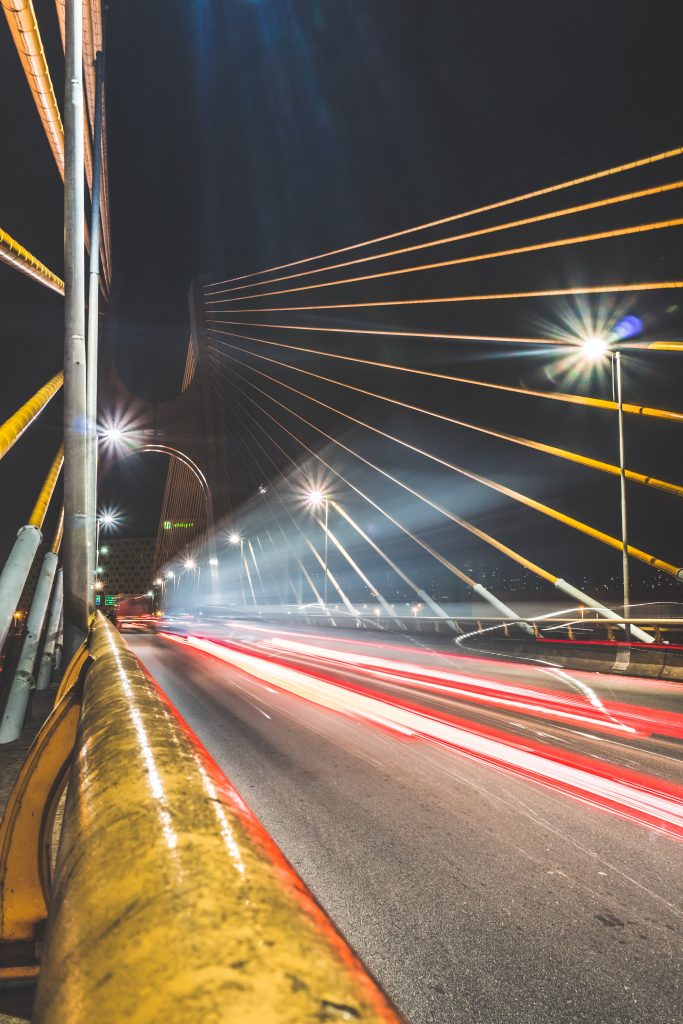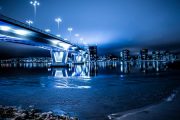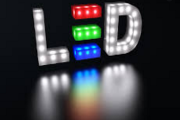What is ROI
ROI is the rate of return on investment, which refers to the value that should be returned through investment, that is, the economic return that an enterprise obtains from an investment activity.
Calculation formula:
Return on investment (ROI) = annual profit or average annual profit/total investment × 100% It can be seen from the formula that companies can increase the return on investment by reducing sales costs, increasing profit margins, and improving asset utilization efficiency. The advantage of ROI is its simple calculation. The return on investment (ROI) is often time-sensitive-the return is usually based on certain years.
Introduction related:
It covers the profit goal of the company. Profits are related to the assets necessary to invest in operations, because managers must obtain profits through investments and existing assets. Investment can be divided into two categories: industrial investment and financial investment. The financial investment that people usually refer to mainly refers to securities investment. There are three main analytical methods for securities investment as follows: basic analysis, technical analysis, and evolution analysis. The basic analysis is mainly used in the selection of investment objects, while technical analysis and evolution analysis are mainly used in the time and space judgments of specific investment operations. As an important supplement to improve the effectiveness and reliability of investment analysis.
The rate of return on investment can reflect the comprehensive profitability of investment centers, and because the incomparable factors of profit differences caused by different investment amounts are removed, it is horizontally comparable, which is conducive to judging the performance of each investment center; in addition, Investment profit rate can be used as a basis for selecting investment opportunities, which is conducive to optimizing resource allocation.
Disadvantages:
The shortcoming of this evaluation index is the lack of overall concept. When the return on investment of an investment project is lower than the return on investment of a certain investment center and higher than the return on investment of the entire enterprise, although the enterprise hopes to accept the investment project, the investment center may reject it; when an investment project invests When the rate of return is higher than the rate of return on investment of the investment center but lower than the rate of return on investment of the entire enterprise, the investment center may only consider its own interests and accept it, regardless of whether the overall interests of the enterprise are harmed.
Return on investment of LED lights for different applications
- LED street light for urban street lighting
Take a 10km-long urban arterial road as an example. The two-way six-lane road, plus the isolation belt, is about 19 meters wide, the light poles are 15 meters high, and the distance between the light poles is 50 meters. The 300W LED street lights needed for this 10km road The quantity is 200pcs. Based on the unit price of $168, the total investment in lighting for this section of the road is about $33,600, and it is a one-time investment, without subsequent maintenance and repair costs, because the LED lights are of good quality, long life, and stable functions. Working hours from 18:00 in the evening to 6:00 in the morning for a total of 12 hours, the electricity consumed is 720Kwh. Based on the average unit price of $0.2/Kwh, the electricity cost per night is about $144.00.
But if you use HPS to achieve the same brightness, the power of the HPS must reach 1000W, then the power consumption of the HPS after 12 hours of work in a night will reach 2400Kwh, and the electricity bill will reach a terrible $480/night, which is more than the electricity bill of LED lights for a night It’s more than three times more. Comparing and calculating, the electricity cost saved by LED street lights over HPS street lights will reach $122,640.00 365 days a year, and the cost of LED lights is less than 1/3 of the electricity saved.
- Gas Station Light
Take a gas station with a height of 7.0m and a canopy area of 1000m2 as an example. To achieve an average illuminance of 150lux, 6 sets of 300W, 130lm/W LED canopy lights need to be installed. From 18:00 in the evening to 6:00 in the morning, a total of 12 hours of working time is calculated. The electricity consumed per night is 21.6Kwh and the electricity bill is $0.3/Kwh, so the electricity bill for one night is $6.48 , The electricity bill for one year is $2,365.20.
If metal halide lamps are used as the lighting source, the gas station needs to install 4 1000W metal halide lamps, so the electricity consumed in one night is 48Kwh, and the electricity bill is $14.40 for one year The total electricity bill is $5,256.00, which is more than double the electricity bill for LED lights. The service life of the LED lamp is generally 5 years. According to this calculation, the electricity cost is about $14,454.00 less than using metal halide lamps, and the cost of 6 300W LED lamps is only $1080.00. Through calculation, we can find that using LEDs the ROI is as high as 1300%!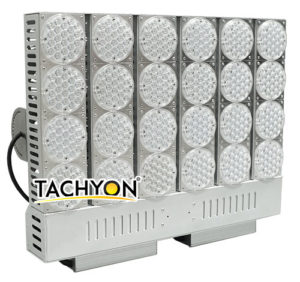
- Stadium Arena Lighting
Take a 105m x 68m standard football field as an example. To meet the illuminance requirements for 4K high-definition television broadcasting, the average illuminance of the stadium needs to reach at least 1000lux. In order to achieve this illuminance, we need to use 52 Tachyon 1000W (170lm/W) LED floodlights with a four-corner layout. According to this design plan, the time of a football match is set to 2H, then the electricity consumed by a match is about 105Kwh, and the unit price of electricity is calculated at $0.3/Kwh, then the electricity cost of a match is about $31.50.
Starting a game, the total electricity bill consumed by 52 games in a year is about $1,638.00. Calculating based on the LED light’s regular life span of 5 years, the electricity bill for a stadium for 5 years is about $8,190.00. If the same stadium, we use 1000W HPS as the lighting source. First, the color temperature of HPS 2700K is too warm and white and not suitable for 4k HD TV live broadcast. Second, the CRI of HPS lights is too low, less than 60Ra, which will seriously affect The judgment and performance of the players will also affect the judgment of the referee and the appreciation of the audience. In addition, let’s make a simple analysis of the economics of HPS.
For a standard stadium to reach the standard illumination intensity of 1000 lux, the number of 1000W HPS that needs to be used is about 150 units, and the electricity consumed in a two-hour game is about 300Kwh, and the electricity bill is about $90.00, which is used for one year. The electricity bill is about $4,680.00, which is nearly three times the electricity consumed by LED lights. Then the electricity bill will be about $23,400.00 in 5 years. Therefore, LED lights will save up to $15,210.00 in electricity costs compared to HPS lights during their 5-year life cycle, and their return on investment is as high as 72%!
The Application Scope of 300W LED Lights
Urban Street Lighting
Urban road
Within a city, a road with certain technical conditions and facilities for vehicles and pedestrians to pass. According to the status of roads in the road network, traffic functions, and service functions for buildings along the route and urban residents, urban roads are divided into expressways, main roads, secondary roads, branch roads, and residential roads.
Express way Long-distance, high-traffic roads in cities that serve fast traffic. Intermediate sub-slots are set between the opposite lanes of expressways, and the entrances and exits are fully controlled or partially controlled.
Major road The arterial roads connecting the main districts of the city adopt the form of separating motor vehicles from non-motor vehicles, such as three or four roads.
Secondary road Combined with the main road to form a road network that plays a role of collecting and distributing traffic.
Branch road The connecting road between the secondary trunk road and the road in the residential area.
Residential road The roads in the residential area and the streets and alleys mainly for pedestrians and non-motor vehicles.
|
Class |
Road type |
Road brightness |
Road illuminance |
The maximum initial value of the glare limit threshold increment T1 (%) |
Environment ratio SR minimum |
|||
|
Average brightness Lav(cd/m2) |
Longitudinal uniformity UL minimum |
Total uniformity Uo minimum |
Average illuminance Eav (lx) maintenance value |
Average illuminance Eav (lx) maintenance value |
Uniformity UE minimum |
|
||
|
I |
Expressway, main road (including roads located in the city center or commercial center) |
1.5/2.0 |
0.4 |
0.7 |
20/30 |
0.4 |
10 |
0.5 |
|
II |
Secondary road |
1.0/1.5 |
0.4 |
0.5 |
15/20 |
0.35 |
10 |
0.5 |
|
III |
Branch road |
0.5/0.75 |
0.4 |
/ |
8/10 |
0.3 |
15 |
/ |
Gas Station Lighting
The lighting of gas stations not only has a direct impact on the vision, work efficiency and physical health of employees, but also is an important part of the landscaping of gas stations. With the requirements of modern cities, gas station lighting is far from enough to meet work needs. A glamorous and colorful gas station at night is a beautiful landscape of the city. Therefore, the lighting of gas stations must not only solve the problem of the quantity of lamps, but also the quality of the lighting. Units with conditions should also consider installing more modern LED canopy lights. 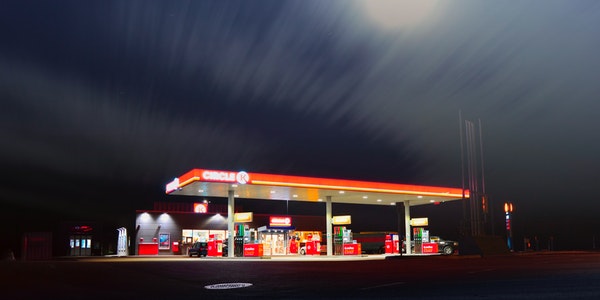
In terms of meeting the needs of the work, we must first consider the uniformity of the lighting; Second, consider the uniformity of brightness in the field of view;
The third is to maintain the stability of the illuminance. The illumination standard of each functional area of the gas station should be selected within the specified illumination range according to the design standard according to the size of the building space, the service object and the use function of the building.
Gas station canopy adopts uniform artificial lighting, and its illuminance standard (a plane 1.2m from the ground) is 50~250Ⅸ, and the color temperature is 3000~4500K. Indoors, canopies and signs should use LED lamps, and the lamps should be of safety protection type;
Special attention should be paid to the lighting of the refueling display of the computer refueling machine and the electric refueling machine, such as the backlight screen lighting method of the computer refueling machine.
Stadium Arena Lighting
- Light source selection
1.1 LED floodlight should be used in gymnasiums with a building height greater than 4 meters. Whether outdoor or indoor, LED lights are the most important light source that should be prioritized for sports lighting HD TV broadcasting.
1.2 The choice of light source power is related to the number of lamps and light sources used, and at the same time affects the illumination uniformity, glare index and other parameters in the lighting quality. Therefore, selecting the power of the light source according to the site conditions can make the lighting solution more cost-effective. The power of the LED light source is classified as follows: 1000W or more (not including 1000W) is high power; 1000~400W is medium power; 250W is low power. The power of the light source should be suitable for the size, installation location and height of the competition venue. Outdoor stadiums should use high-power and medium-power lights, and indoor stadiums should use medium-power lights.
1.3 The luminous efficiency of various LED lamps with different powers is 80~200Lm/W, the color rendering index is 65~90Ra, and the color temperature of the lamp is 3000~7500K depending on its type and composition. For outdoor sports facilities, 4000K or higher is generally required, especially at dusk to match the sunlight. For indoor sports facilities, 4500K or higher is usually required.
1.4 The lamps should have anti-glare measures.
1.5 Used in gymnasiums that should have long service life. LED lights have long service life and slow light decay. High-power HPS usually has a short service life and fast decay, which is not suitable for long-term and frequent use.
1.6 The protection level of the lamp housing should not be less than IP55, and the protection level should not be less than IP66 in places that are not convenient for maintenance or severely polluted.
- Light pole requirements
2.1 For the four-tower or belt-type lighting method of the stadium, the lighting high pole should be selected as the carrier of the lamp, and the structure combined with the building can be adopted.
2.2 The high lighting pole should meet the following regulations: When the height of the pole is greater than 20 meters, an electric lifting basket should be used; When the height of the light pole is less than 20 meters, a ladder should be used. The ladder has a guard fence and a rest platform.
2.3 The high lighting pole should be set with obstacle lighting according to navigation requirements.
- Outdoor stadium Outdoor stadium lighting should adopt the following layout: Arrangement on both sides-lamps and lanterns are combined with light poles or building horse tracks, arranged on both sides of the competition field in the form of continuous light strips or clusters. Four-corner arrangement-lamps are combined with light poles in a concentrated form and arranged in the four corners of the playing field. Mixed layout-a combination of two-sided layout and four-corner layout.
Grow Light for Cannabis, tomotoes, lettuce, etc.,
From a practical point of view, artificial light sources have different color temperature performance and brightness. In fact, it is not only the difference in human visual effects, but can directly affect the growth state of plants, because artificial light sources directly affect the results of photosynthesis of “light” by plants. , Not only the difference in light color of visible light, but also the difference in different spectral ranges and lumens. Therefore, the focus of examining the benefits of artificial light sources should be on more specific light source spectrum and light intensity differences. On the contrary, the visual difference seen by the human eye is not so important. Through repeated experiments, it has been verified that plant growth has different effects on the spectrum and lighting intensity of different artificial light sources. In fact, under different wavelengths of light, the photosynthesis effects of plants are very different. In the light required by plants, 400~520nm, 610~720nm can have significant effect on photosynthesis of general plant growth.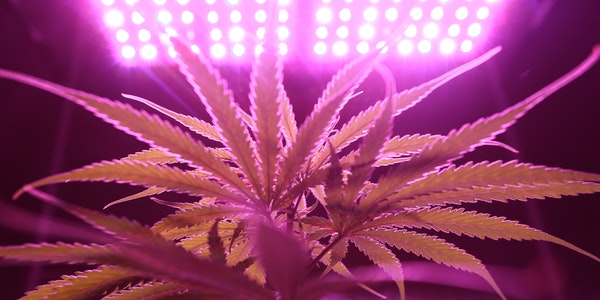
Common general-purpose plant growth lamps will mostly lock light sources with wavelengths of 400~520nm (blue) and 610~720nm (red), and enhance their growth effects through spectral light sources that are directly beneficial to plant growth. Artificial light source plant grow lights are mostly made into three styles of red and blue light, or full blue and full red light, to provide red and blue wavelength light that can promote the growth of photosynthesis of plants, and cover plants through artificial light sources Planting surface to increase the wavelength range of light required for photosynthesis. In practical applications, artificial light sources synthesized from red and blue light can actually produce pink mixed light that is extremely uncomfortable for the human eye. Although the visual experience of the human eye is quite poor, the actual benefit to plant growth is relatively significant.
The difference between the actual plant’s exposure to different artificial light and different wavebands spectrum can also be verified to have a more detailed difference performance. If the LED white light element for general lighting is used, the most common is to use a blue chip to emit light, with yellow phosphor to adjust the light color. Although it produces a visual white light experience for the human body, the actual lighting spectrum falls on 445nm blue light. The area, 550nm yellow light area is the main area, but the 610~720nm spectral range of the plant growth is not obvious in promoting the benefits. This is why the use of white LEDs to illuminate the plants can not achieve the plant growth benefits like normal sunlight.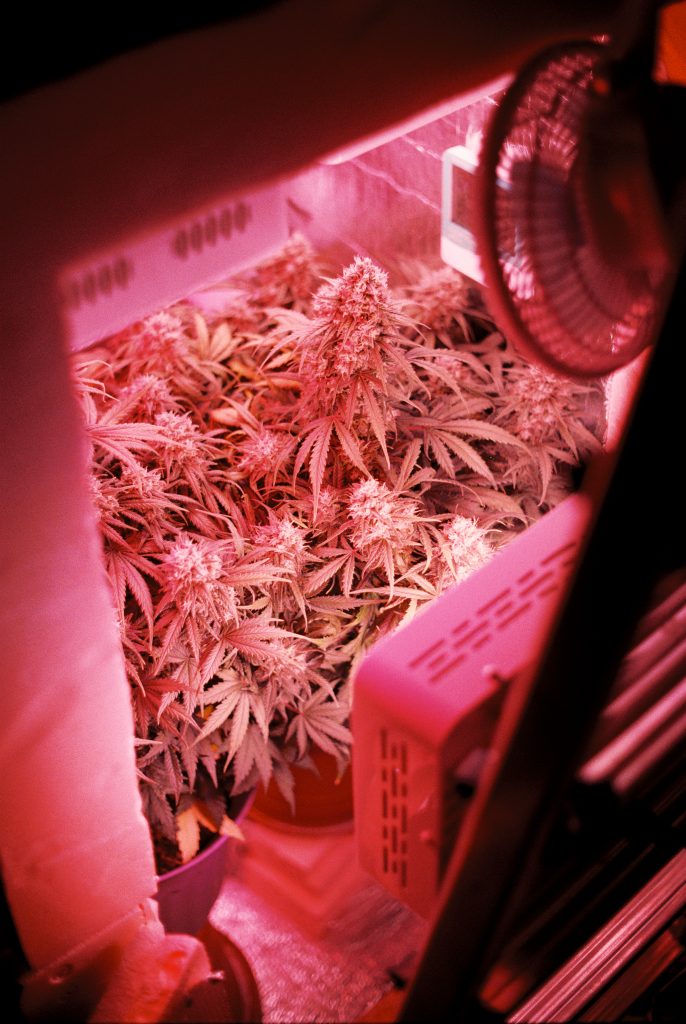
For existing commercially available plant growth lamps, if the red and blue integrated auxiliary light sources are designed, you will find that the configuration of the red and blue light sources will be in the ratio of 10:1 or 5:1. Generally, red light is the most beneficial for growth. Obviously, the second is blue light. The combined effect has the effect of growth and multiplication. The actual plant growth benefit of mixed light will vary slightly according to different types of plants. The actual introduction still needs to be tested repeatedly and debugged depending on the planting situation
The best combination, it should be noted that the ratio of red and blue light should not be compared with the number of light-emitting elements, because the light efficiency of red and blue light-emitting elements itself has a huge gap, and the red and blue light should be compared with the respective lumens (brightness) Refer to it to get a more reasonable light mixing ratio. The artificial light source should be used to strengthen the growth setting conditions. If the artificial light source is too far away from the plant, the light benefit will be diminished, and the artificial light source should not be too close to the plant.
Generally, the light source is set up to about 50 cm from the plant leaf height. For different plant types, additional consideration should be given to light intensity to avoid affecting their growth efficiency. For different plant types, there are leafy vegetables, fruits, general types, etc. For example, the red light and blue light configuration of leafy vegetables uses 4:1 as the optimal state. For fruits such as strawberries or similar fruit cash crops, use 5 :1 Red and blue mixed light is the priority. If it is general general plant growth assistance, you can choose 7:1 or 8:1 red and blue ratio configuration.

